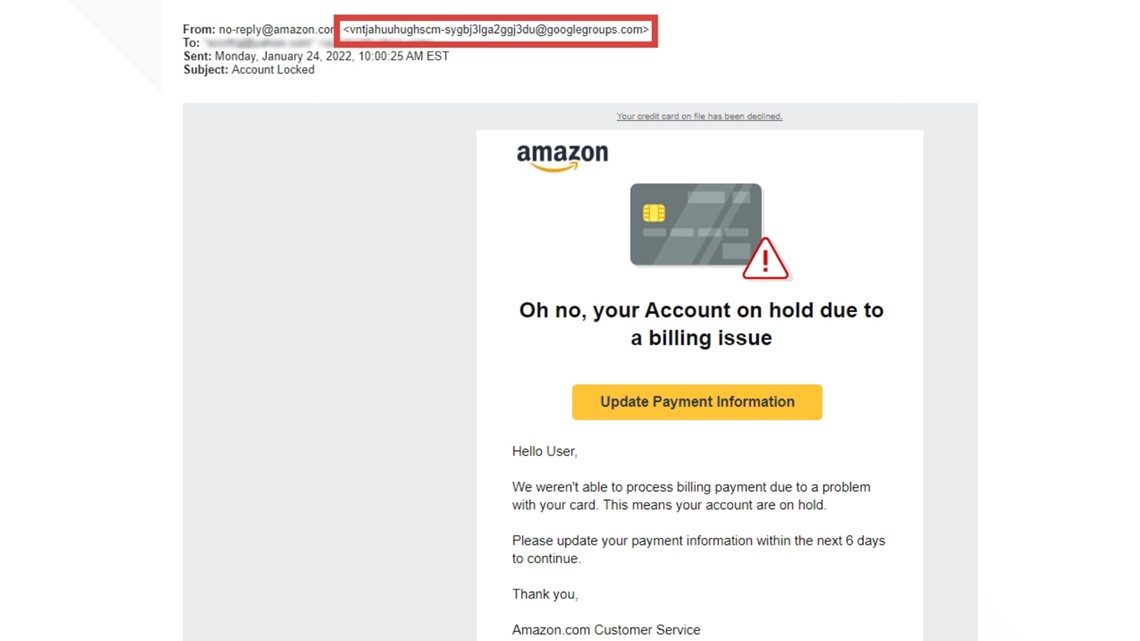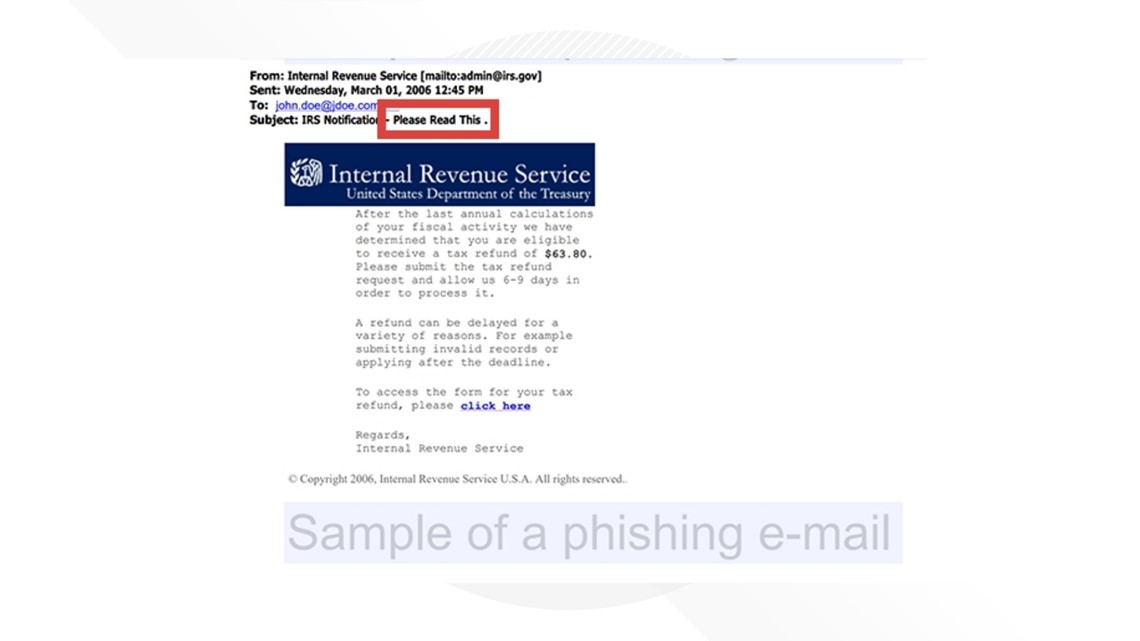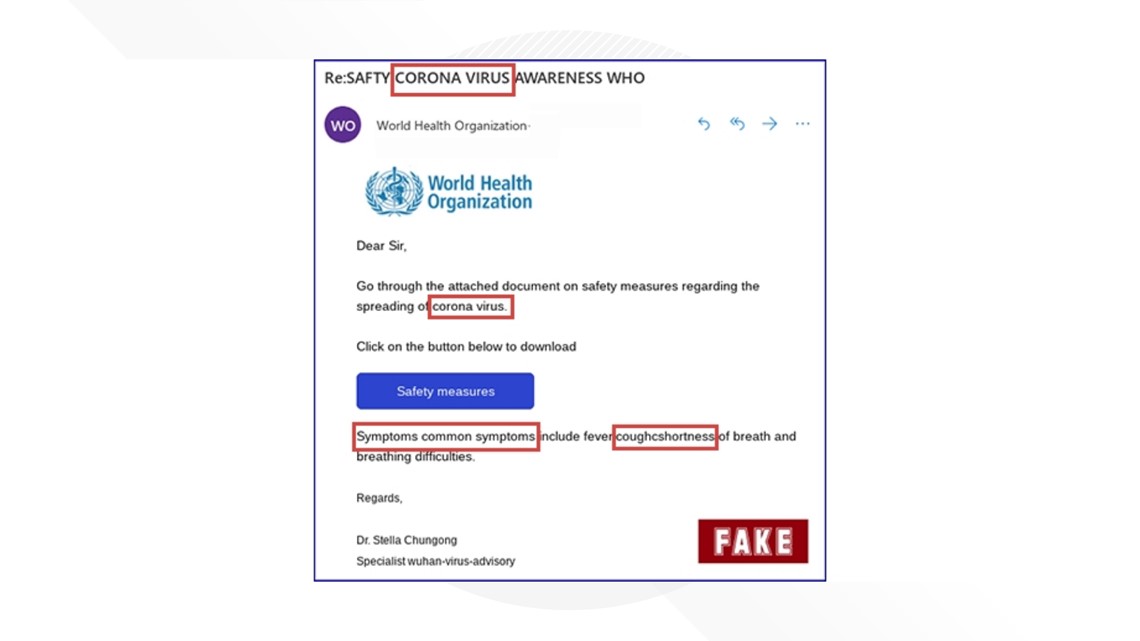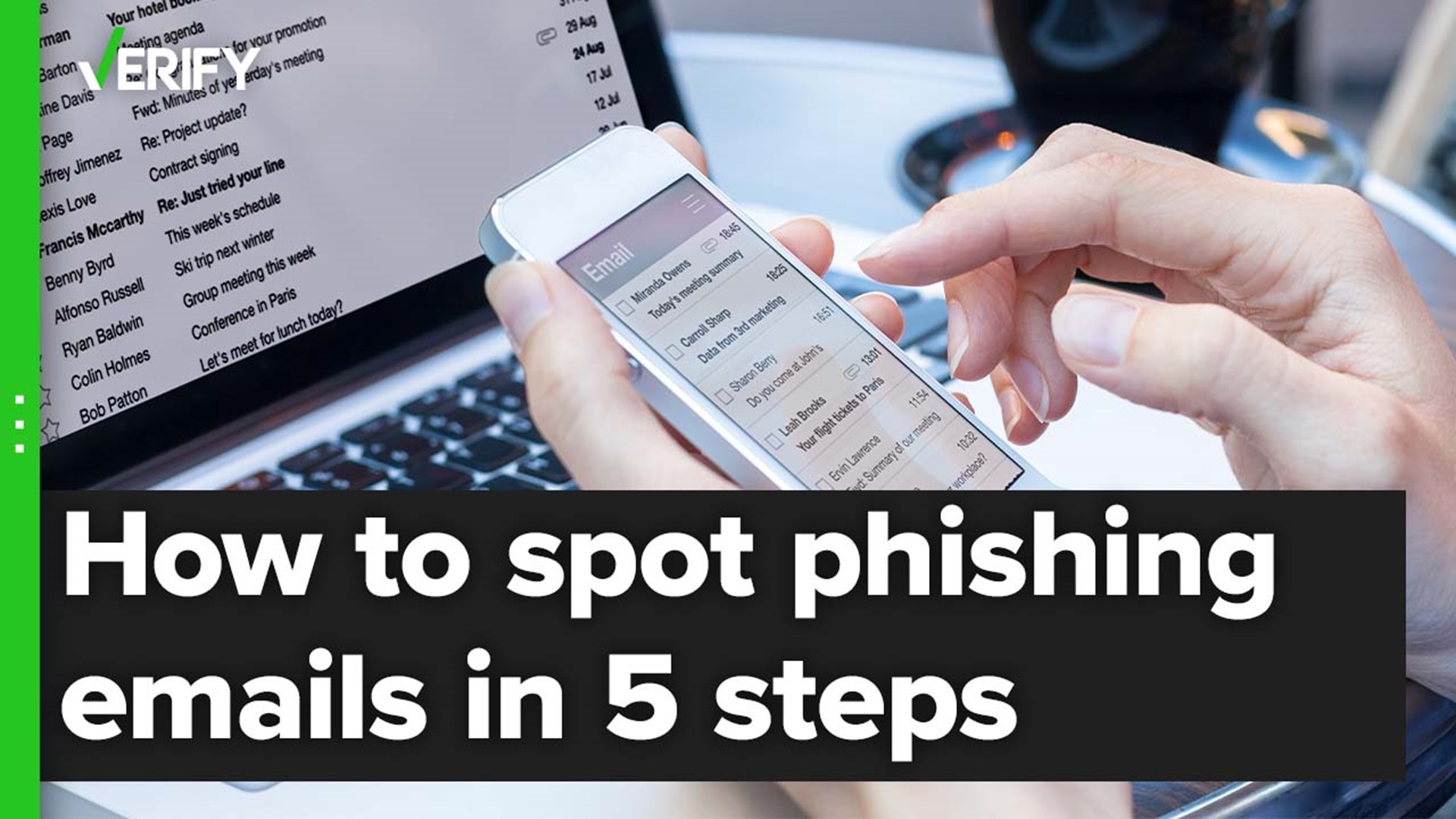At VERIFY, we’re dedicated to helping you figure out what’s true and false. One of the top questions we get is whether an email a viewer has received is a scam. Some scam emails can look legitimate, but there are ways to figure out for yourself if an email is fake. We compiled five key tips you can use to figure out if an email is a scam.
THE SOURCES
Here are five things to be on the lookout for to determine if an email you received is real or fake:
- Scammers pose as a company but the email comes from a different email address: Scam emails may look like they’re coming from a company that you know or trust, such as a bank, a credit card company, or an online store like Amazon, the Federal Trade Commission (FTC) says. The email below looks like it’s from Amazon, but it uses a Google Groups email address. Amazon says its real emails are sent from an amazon.com account.


False sense of urgency: Scammers will often create a false sense of urgency in prompting you to click a link or open an attachment immediately. The email will often have an urgent subject line. The IRS provided this example of a fake email:


Generic greeting: Scammers often use a generic greeting instead of the person’s name. Here’s an example of a scam email with a generic greeting from the FTC:


Prompt you to open a link or attachment: Scam emails often try to trick you into clicking a link or opening an attachment. Some of the red flags include notifying you about suspicious activity or login attempts, claiming there’s a problem with your account or payment information, asking you to confirm information or wanting you to click on a link to make a payment.


Spelling or grammatical errors: Obvious spelling and grammatical errors are possible signs of a scam, including those in the domain name. Here’s an example from the FTC:


How do you report scam emails?
You can report email scams to a handful of agencies, including the FTC, Better Business Bureau (BBB) and others.
The FTC says you can file a claim or report fraud with the FTC online.
The BBB has a Scam Tracker on its website devoted to reporting potential illegal schemes or fraud. You can report a scam online.
Social Security asks people to report fraud or scams on its website.
You can also report potential email scams to the Federal Bureau of Investigation (FBI) by visiting its Internet Crime Complaint Center website.
Don’t click on links or open attachments in suspicious emails. If you are unsure, contact the company directly using an email or phone number that you know is real.












